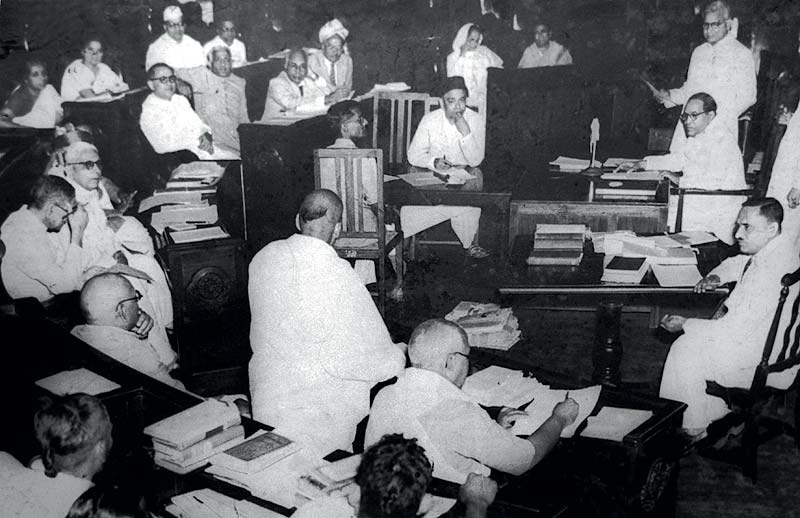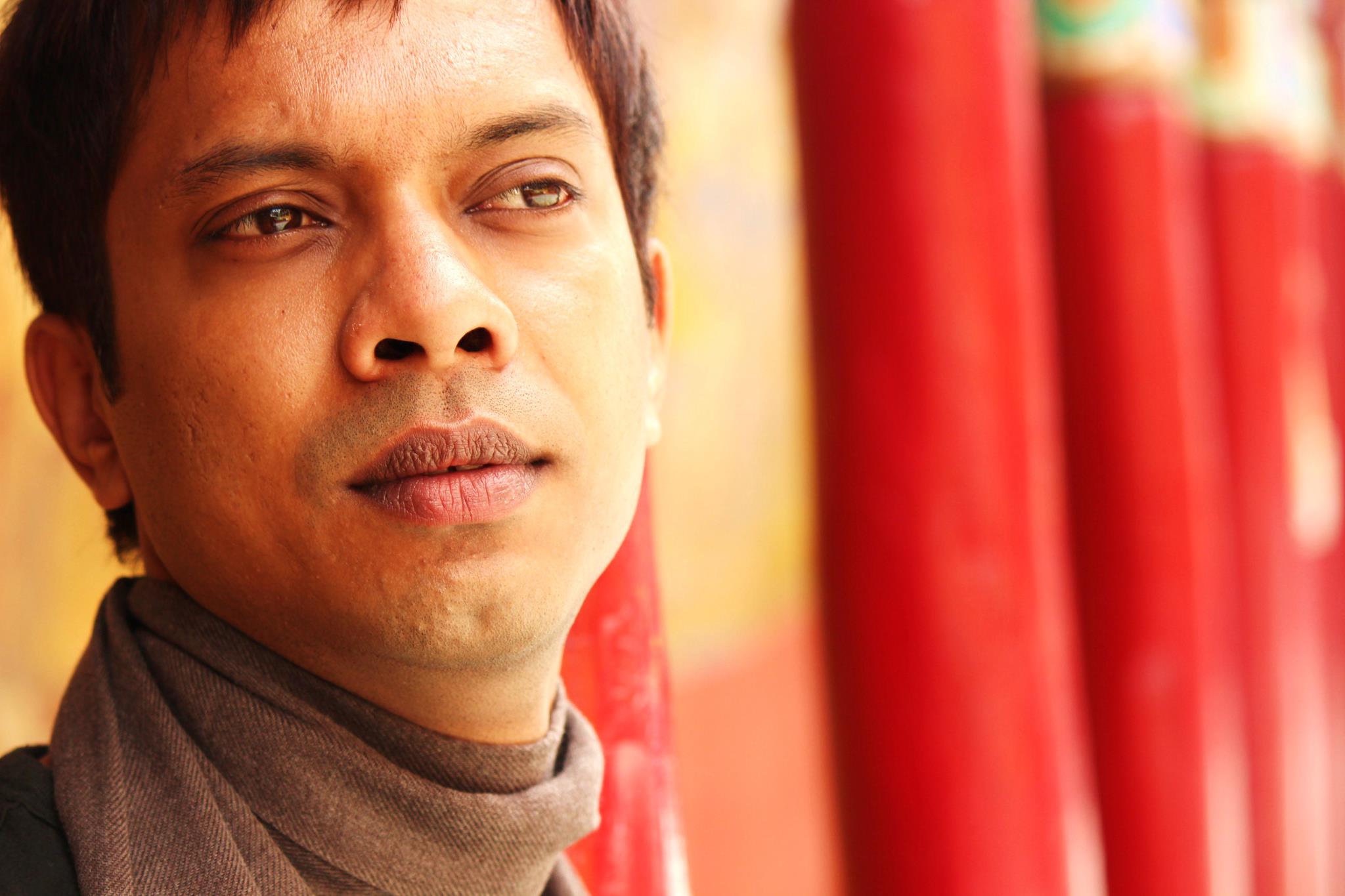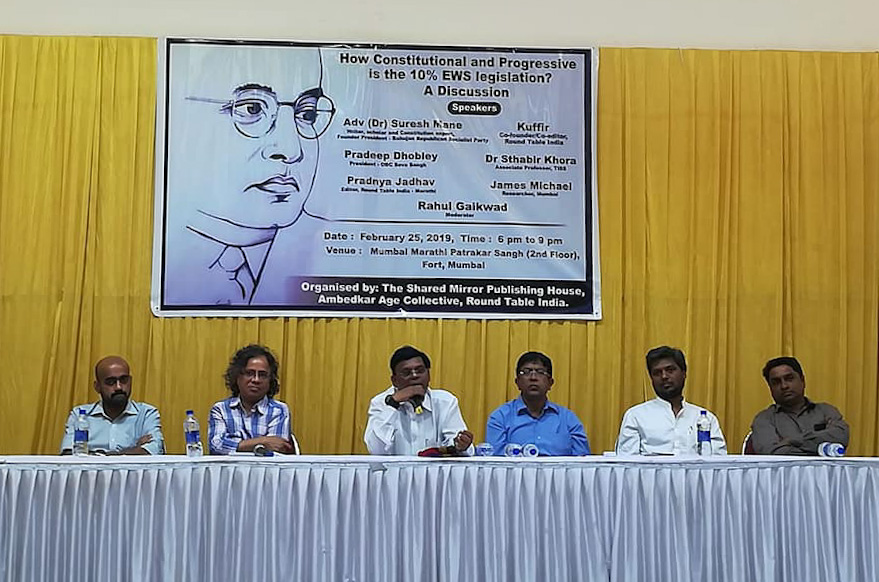S Kumar
This article is not written to instigate people to violence or break the law in any sense. The purpose of this article is to rethink before celebrating 26th November as Constitution Day and blindly call it Ambedkar’s Constitution.
To calm the minds of people after reading the heading, I would like them to read the original speeches by stalwarts of Bahujan history i.e. Periyar and Ambedkar.

Periyar on Constitution
Periyar EVR, the rationalist thinker, and beloved leader of the masses who led the revolutionary changes in Southern part of India expressed his thoughts in his speech at Chennai beach, Triplicane on 03.08.1952.
We will burn the constitution- why?
Ladies and Gentlemen!
Can anybody say that India was one united nation before the British came? Was the Dravidian land ruled by anyone who was not a Dravidian? The British, for their own convenience tied together the various places he had won in his conquests together. He used the name that the Muslims gave him. One way or another this nation maybe a reality today, but how is it fair for you to exploit and rule this nation in a way that is worse than the Mughals and the British? You are imposing your language on us just like they imposed theirs.
You’ve made yourself this constitution. It is much like the Manu shastra, a book of law that denies intervention or change by one and all. In the name of this book you have begun to control and oppress us. As per the constitution, one cannot oppose exploitation; we cannot ask for an independent nation, we cannot ask for reservations. You have made all of these efforts ‘punishable by law’.
Today, I would like to declare that we will not accept this constitution. This constitution affects us adversely. It has not been framed by our representatives. We will burn it.
With whose consent and with whom did you frame this constitution? You held elections maintaining the suffrage system as established by the British; for the rich and the educated alone. Those who won that election then made the constitution. Remember, you yourself boycotted all the laws that the British brought in using this suffragette system!
The two and a three fourth Brahmins, five rich people and their servants are to be the representatives of this nation? Was this constitution made with the participation of the poor of this country; the majority of the population? In 1946 you declared that the constitution will be made by the representatives elected after all people above the age of 21 can vote in this country. Did you do that?
Do you actually believe that you can get away with anything just because the British flung the country into your hands as they left in a hurry? You’ve established a constitution that will permanently oppress us and make it easy for you to exploit us. You then go ahead and impose this constitution on all of us? Did you tell the British you were going to do this when you asked for ‘independence’?
So, we will burn the constitution just like we burnt the Ramayana, Mahabharatham, Geethai, Prabandam etc. Just like how we declared and burnt all of those texts as being impractical and harmful for our everyday lives, we will do the same with this constitution that has been put in place to make it easy for those in power to enslave and exploit the people of this country. We will burn it. Yes, we will!
The rationale provided in the above speech is valid till date. The Constitution has been amended further since then providing more punishment for opposing any exploitation. The reservation is limited to 50% just by court order, deriving power from Constitution, against the wishes of the people and even democratically elected Governments are unable to alter that.
Periyar led his followers from the front in realising his mission statement of building a rational society and passed a resolution to burn the excerpts of Articles in Constitution on 3/11/1957 as a protest against the inclusion of Articles supporting caste. Some 10,000 people burnt the excerpts of the Constitution of India. About 3000 of them were arrested and sentenced to undergo 6 months to 3 years rigorous imprisonment. Some 15 to 18 persons died in and out of jail due to incarceration.
Periyar’s agitation against the unjust part of the Constitution resulted in the first Constitutional Amendment which included reservation for OBCs based on socio-economic backwardness. The important point here is that Periyar mentioned that the Constitution was created by Brahmins instead of saying it as Ambedkar’s Constitution, which is a widely held notion currently. In 1952, both the leaders, Ambedkar and Periyar were at good terms with each other, both fighting against the injustice of the caste system. There was no reason to deny the credit to Ambedkar by Periyar for his contribution to the Constitution.
The fact of the matter is that Ambedkar is not the author of the Constitution. Here is the original copy of the Constitution in 1951. The first signature in the document at page number 222 is by Rajendra Prasad as President of the Constituent Assembly, and then by Jawaharlal Nehru as first Prime Minister of independent India. Further, the document was signed by 284 members of the house, indicating that it was a mutually agreed document among the members of the Constituent Assembly.
Constitution of a democratic nation cannot be an independent work of a single person, be the person as great as Ambedkar. The whole idea of a democratic society adopting a Constitution is to agree on rules of the society based on consensus. To re-emphasise the point that Constitution is not his independent work Ambedkar himself told the Constituent Assembly on the 26th Nov 1949.
I do say is that the principles embodied in the Constitution are the views of the present generation or if you think this to be an overstatement, I say they are the views of the members of the Constituent Assembly.
Dr. Ambedkar was the Chairman of the Drafting Committee of the Constitution. There were multiple committees formed to achieve the aims of the Constituent Assembly. One of the important committees was the Committee for Union Constitution led by Nehru. Another Sub-Committee for Fundamental Rights was led by J.B. Kripalani and Sardar Patel was the chairperson of the Committee for Fundamental Rights, Minorities and Tribal and Excluded Areas. Calling Dr. Ambedkar as the author of the Constitution is as wrong as calling Nehru an author of the Union Constitution and Patel as the author of part of the constitution dealing with Tribals and Minorities.
The fact is that the respective committees recommended their best bits of advice to be included in the draft Constitution. On 29th Aug 1947, the Drafting Committee was set up and the first draft was ready by Jan 1948. Once the draft Constitution was ready by incorporating all the ideas, the Constitution was debated among the members of the house and it disposed of 2,473 amendments out of a total of 7,635 tabled changes.
Most important point to note is that Congress with Nehru as leader of the Party held the great majority in the house. And there is hardly any doubt that what Congress and Nehru wanted in the Constitution were all included. Further, many ideas that Ambedkar wanted to include in the Constitution could never be incorporated into the Constitution.
Ambedkar wanted to abandon the election process agreed upon in the Poona Pact and demand separate electorates for Scheduled Castes. Further, Ambedkar wanted representation based on the share of population in the executive i.e. Government’s cabinet. Additionally, Ambedkar wanted that the representative of the Scheduled Castes in the Cabinet shall be elected by the Scheduled Castes only. These and many other ideas he proposed in his memorandum ‘States and Minorities’ were submitted to the Constituent Assembly in 1947.
Moreover, many provisions that Ambedkar never wanted in the Constitution were included in the final Constitution as per the wishes of the members of the house. Ambedkar called Article 356 ‘a dead letter’ for president’s rule in the state, and it got included in the Constitution.
Ambedkar on Constitution
We should also consider and evaluate what Ambedkar himself told about burning the Constitution. On 2 September 1953, Dr BR Ambedkar in the Rajya Sabha stated the following:
Sir, my friends tell me that I have made the Constitution. But I am quite prepared to say that I shall be the first person to burn it out. I do not want it. It does not suit anybody. But whatever that may be, if our people want to carry on, they must not forget that there are majorities and there are minorities, and they simply cannot ignore the minorities.
Further, on 19 March 1955, Dr. Ambedkar clarified his statement in Rajya Sabha debate regarding the burning of the Constitution.
I said that I wanted to burn the Constitution. Well, in a hurry I did not explain the reason. Now that my friend has given me the opportunity, I think I shall give the reason. The reason is this: We built a temple for God to come in and reside, but before the god could be installed, if the devil had taken possession of it, what else could we do except destroy the temple?…That’s the reason why I said I would rather like to burn it.
The above statements clearly indicate that he clearly wanted to burn the Constitution because it was not serving the purpose for the downtrodden population to bring the intended purpose of the Constitution of creating Liberty, Equality, and Fraternity. He left it to the people to carry on with the Constitution but warned against ignoring the minorities.
Conclusion
Ambedkar had made the major contribution in drafting the Constitution of India, but calling it Ambedkar’s Constitution will do injustice to Ambedkar himself.
There is ample proof that the Constitution has been changed drastically in the last 68 years through more than 100 Constitutional Amendments. Many of these amendments have altered the basic structure of the Constitution.
Many will argue that the Judiciary is protecting the basic structure of the Constitution, but the judiciary is itself defying basic structure of the Constitution by following Collegium process for appointment of judges. The Constitution, despite having more than 200 pages in the original document has only three pillars of democracy (media being unofficial fourth pillar). All the three pillars have been hijacked by a single caste, Brahmin.
Ambedkar’s idea of a just society was based on Liberty, Equality, and Fraternity while protecting the rights of minorities and backward communities. His own idea of what should be part of Constitution was presented independently in his memorandum ‘States and Minorities’.
The author sincerely requests the people celebrating the occasion of 26th November, by paying respect to our beloved Babasaheb, to read Ambedkar’s original ideas presented in ‘States and Minorities’ instead of looking at Constitution of India in its present form. If not physically burn the current Constitution, then the Bahujans should actively work towards incorporating the ideas of ‘States and Minorities’ in the Constitution of India to achieve the wishes of Babasaheb Ambedkar.
~~~
S Kumar is a technocrat with education from a top engineering institution.
Image courtesy: the internet.









